Key takeaways
- Effective use of Google Ads for artists relies on targeted keywords and a clear understanding of the audience to drive genuine engagement.
- Regularly optimizing ad campaigns through A/B testing and performance tracking helps in refining strategies and maximizing reach.
- Combining online promotion with live performances and authentic storytelling enhances audience connection and loyalty.
- Embracing small victories in campaign analytics fosters motivation and encourages ongoing experimentation in marketing efforts.
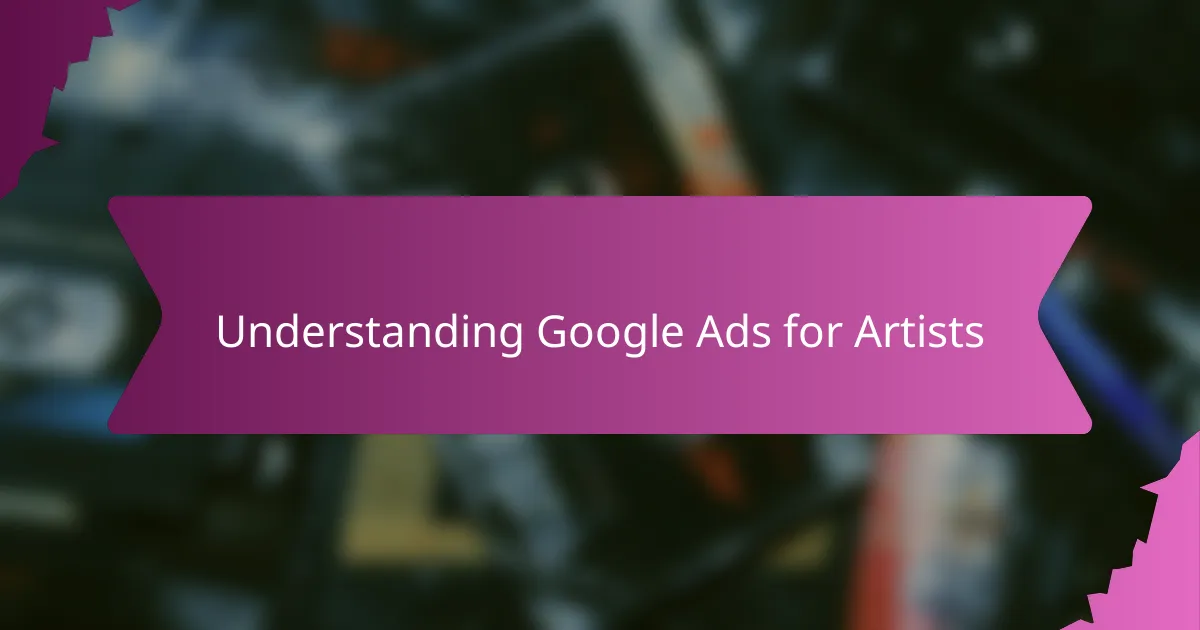
Understanding Google Ads for Artists
When I first dipped my toes into Google Ads as an artist, I wasn’t sure what to expect. Understanding that these ads work by targeting specific keywords and audiences made me realize how precise I could be in reaching potential listeners. Have you ever wondered how some musicians seem to pop up right when you’re searching for music that fits your mood? That’s the magic of Google Ads at work.
One thing I quickly learned is that Google Ads isn’t just about throwing money at promotion; it’s about strategy and knowing your audience inside out. For artists like us, this means selecting keywords that truly reflect our style and the emotions our music evokes. It can feel overwhelming, but once you get that, you start to see how it turns into a conversation rather than a shout into the void.
What fascinates me the most is how Google Ads allows you to connect with people who might not have found your music otherwise. It’s like opening a door to new fans without waiting for a big break. From my experience, the key is to stay authentic in your messaging while experimenting with what words and visuals resonate best—because at the end of the day, that’s what really draws people in.
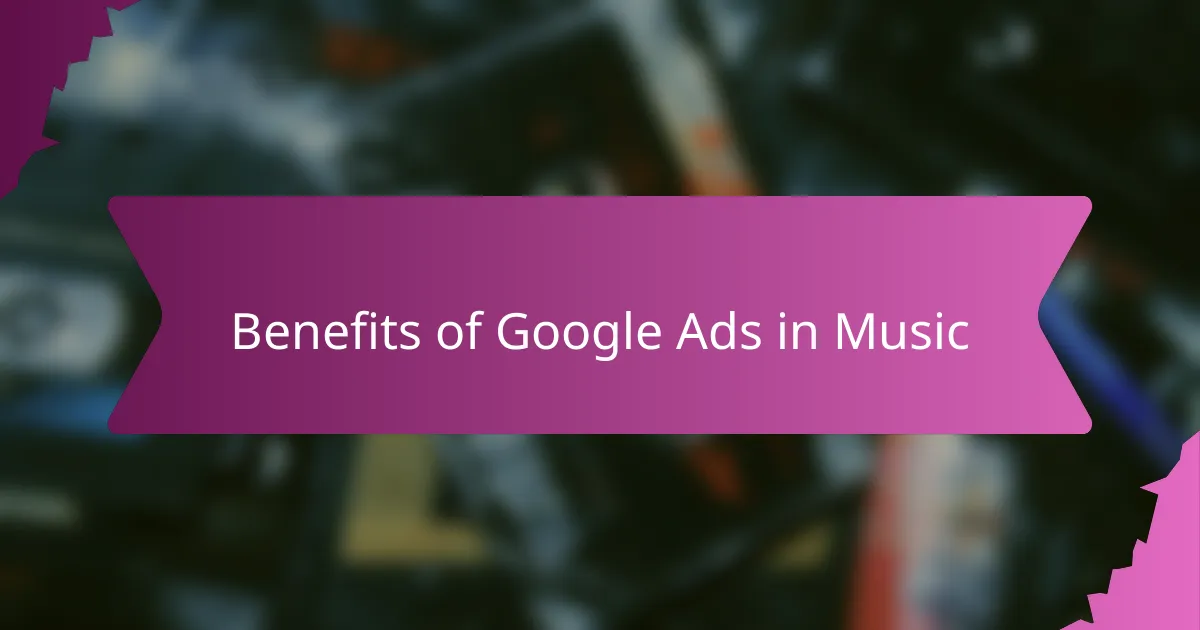
Benefits of Google Ads in Music
One of the biggest benefits I found with Google Ads in music is the ability to zero in on exactly who I want to reach. Instead of hoping my music just gets lucky on some playlist, I get to put it right in front of listeners actively searching for sounds like mine. Have you ever felt frustrated waiting forever for your music to be discovered? This targeting can really change that experience.
Another thing that struck me was how budget-friendly the platform can be, especially when you test and tweak your campaigns. I didn’t have to spend a fortune to see real results—just some patience and smart choices about keywords and audiences. In fact, small, consistent ad spends helped me build momentum without breaking the bank.
Lastly, there’s something empowering about controlling your own promotional destiny. Google Ads gave me a sense of agency in an industry that often feels unpredictable. It’s more than just ads; it’s about building meaningful connections by showing up where it really matters, and that’s been a game-changer in how I approach marketing my music.
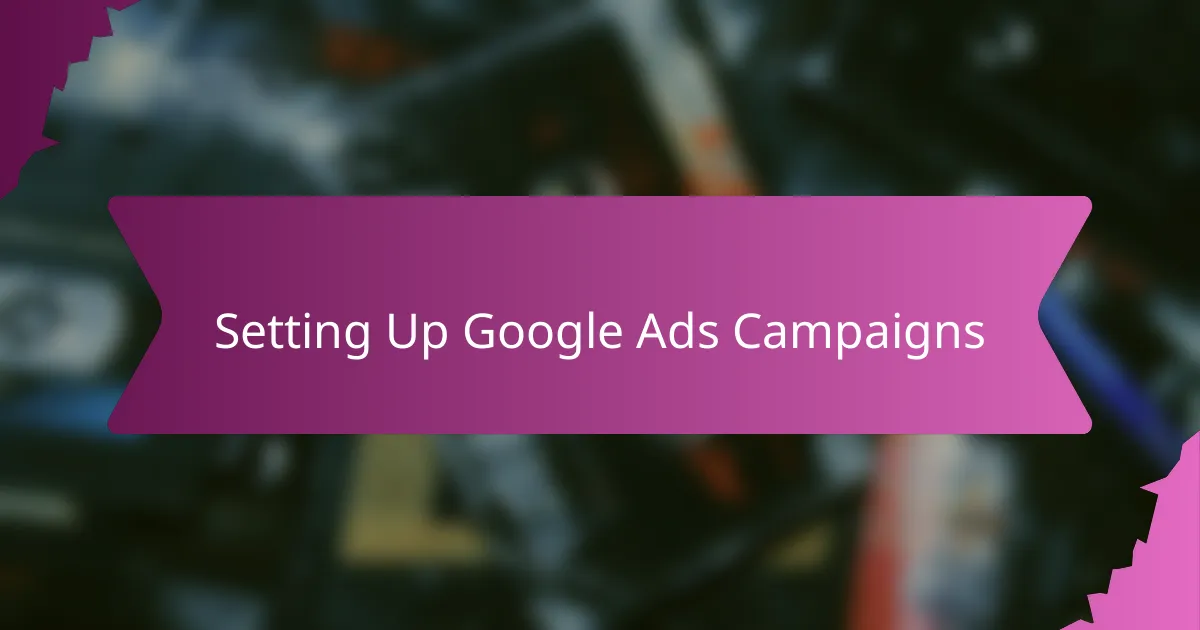
Setting Up Google Ads Campaigns
Setting up a Google Ads campaign felt a bit like learning a new instrument at first—there were terms and tools that seemed confusing, but once I started playing around with the interface, things clicked. The key was choosing the right campaign type; for artists, Search campaigns usually made the most sense since they directly target listeners searching for music or related content. Have you ever tried creating something from scratch and felt that rush when it finally works? That’s exactly how launching my first campaign felt.
I also discovered the importance of carefully crafting ad groups and selecting keywords that matched not just my genre, but the mood and story behind each track. It made me realize that it’s not just about any traffic, but about attracting the right people who are genuinely interested. Setting budgets was another learning curve—I started small, letting the data guide me instead of guessing, which saved me from wasting money on clicks that didn’t convert.
What surprised me most was the need for ongoing tweaks and attention. Running a campaign isn’t a “set it and forget it” deal; it’s more like fine-tuning a mix until it sounds just right. I’d check performance daily, pausing keywords that didn’t perform and experimenting with new phrases that could catch a fan’s curiosity. That hands-on approach made me feel involved in every step of reaching my audience.
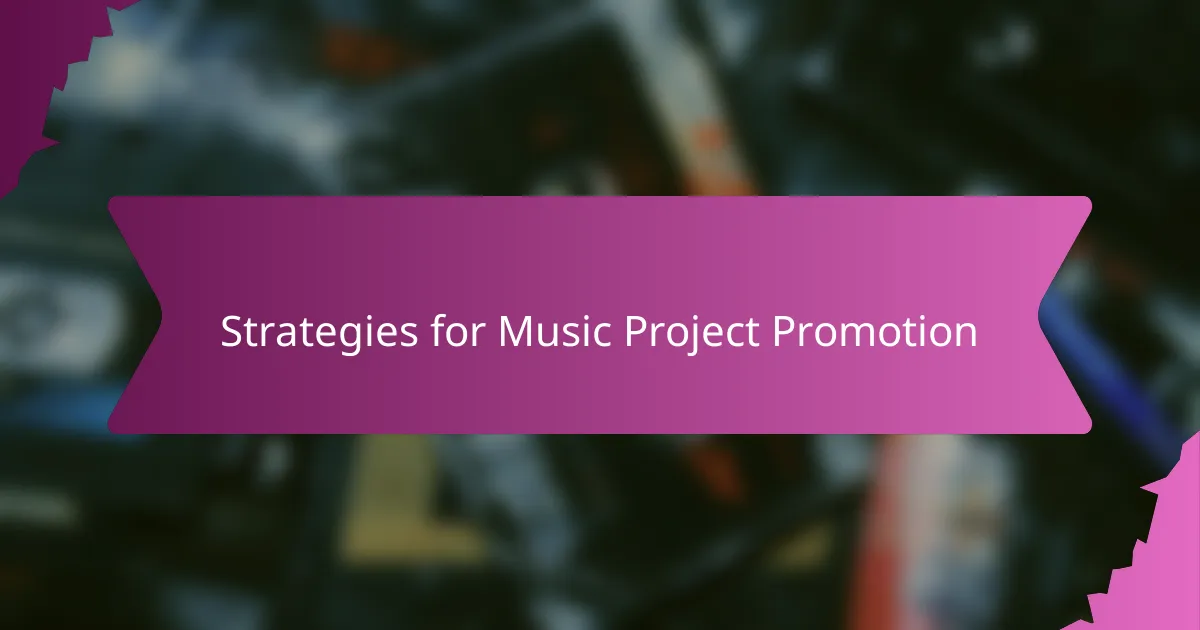
Strategies for Music Project Promotion
Promotion strategies for a music project are all about finding creative ways to connect with your audience. I’ve found that combining online efforts, like social media teasers and targeted Google Ads, with live performances creates a stronger impact. Have you ever noticed how sharing a behind-the-scenes story can make your music feel more relatable and memorable? That personal touch often sparks curiosity and loyalty.
Another approach that worked well for me is collaborating with fellow musicians or influencers who share a similar vibe. This doesn’t just broaden your reach; it adds authenticity because the music is coming through trusted voices. Sometimes, it’s less about pushing hard and more about building genuine connections that naturally invite people to listen.
And let’s not forget the power of consistency. Releasing content regularly—whether it’s a new single, a video, or even an intimate Q&A—keeps you on your listeners’ radar without being overwhelming. I’ve learned that pacing myself this way keeps the excitement alive and helps fans feel like they’re part of the journey, not just one more face in the crowd.
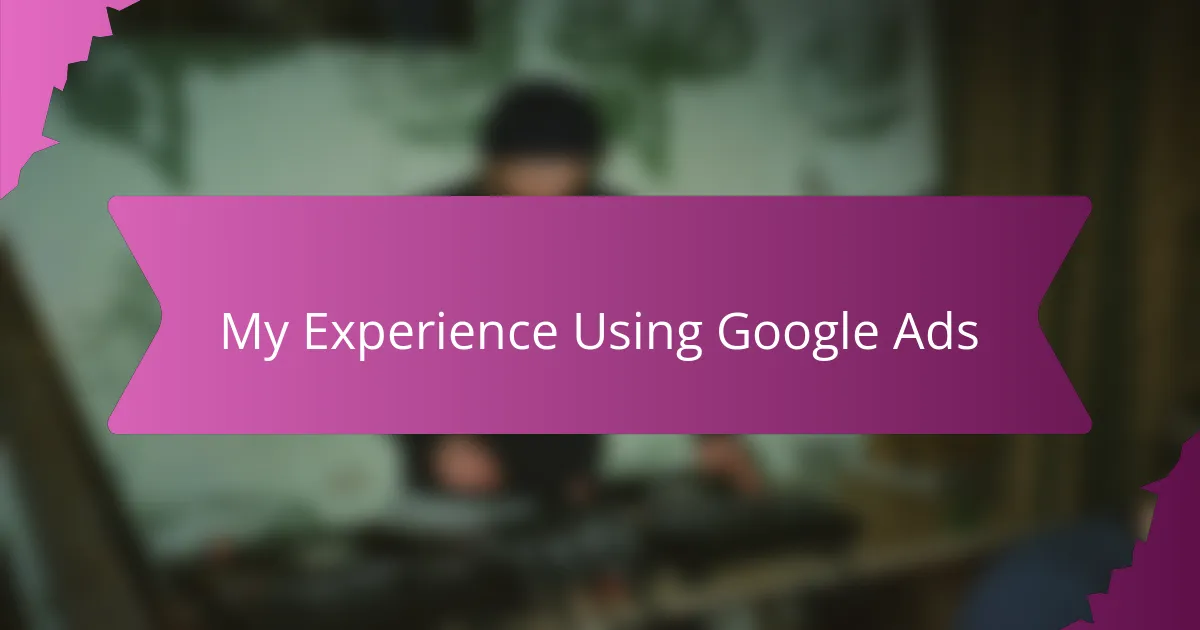
My Experience Using Google Ads
Using Google Ads for the first time was definitely a learning curve. I remember feeling a bit lost staring at all the options, unsure if my small budget would even make a dent. But once I saw those impressions start turning into actual clicks—and better yet, genuine listeners—it felt like a small victory worth all the trial and error.
One thing that surprised me was how much control I had over who saw my ads. It wasn’t just a random blast; I could fine-tune the audience until it felt like I was speaking directly to people who might actually connect with my music. Have you ever felt that frustration of shouting into the void? This targeting helped me break through that noise.
Still, it wasn’t always smooth sailing. Some days, I’d wake up to disappointing results and wonder if I was wasting my time or money. But tweaking the keywords, experimenting with different messages, and learning from those “failures” felt like mixing a track—you keep adjusting until it finally hits the right note. That persistence really paid off in the end.
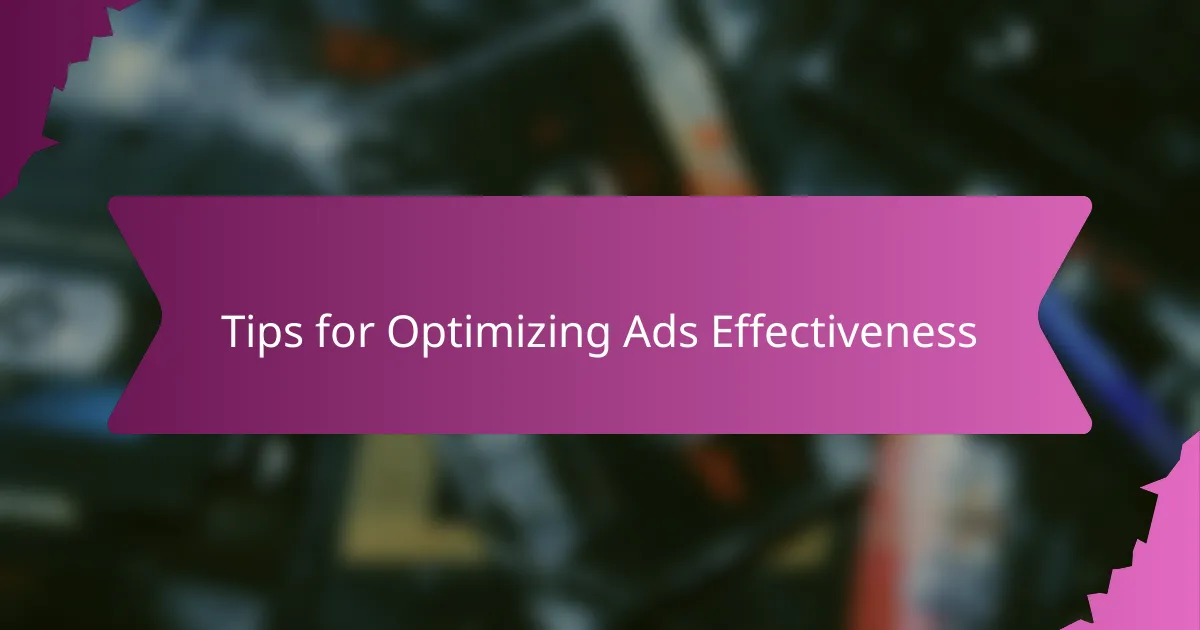
Tips for Optimizing Ads Effectiveness
Optimizing your Google Ads starts with really paying attention to the keywords you choose. I learned this the hard way—early on, I threw in broad terms hoping for wide reach but ended up with clicks from people who weren’t interested at all. Narrowing down to more specific keywords that match the vibe of my music made a huge difference. Have you ever clicked an ad only to feel it wasn’t meant for you? That’s what we want to avoid.
Another tip I swear by is testing different ad copy and visuals regularly. At first, I stuck to one version, thinking consistency was key, but mixing things up helped me discover what truly resonates. Sometimes, a slight change in wording or an image that tells a story can spark curiosity in a way a generic ad never will. It’s like revising lyrics until they sing just right—ads need that same care.
Finally, don’t underestimate the power of tracking your results closely. I check my campaigns daily, cutting out anything that doesn’t perform and reinvesting in what works. It might seem tedious, but this hands-on approach saved me from wasting budget and helped me build a connection with real listeners. When was the last time you really dove into your numbers? For me, that’s where the magic happens.
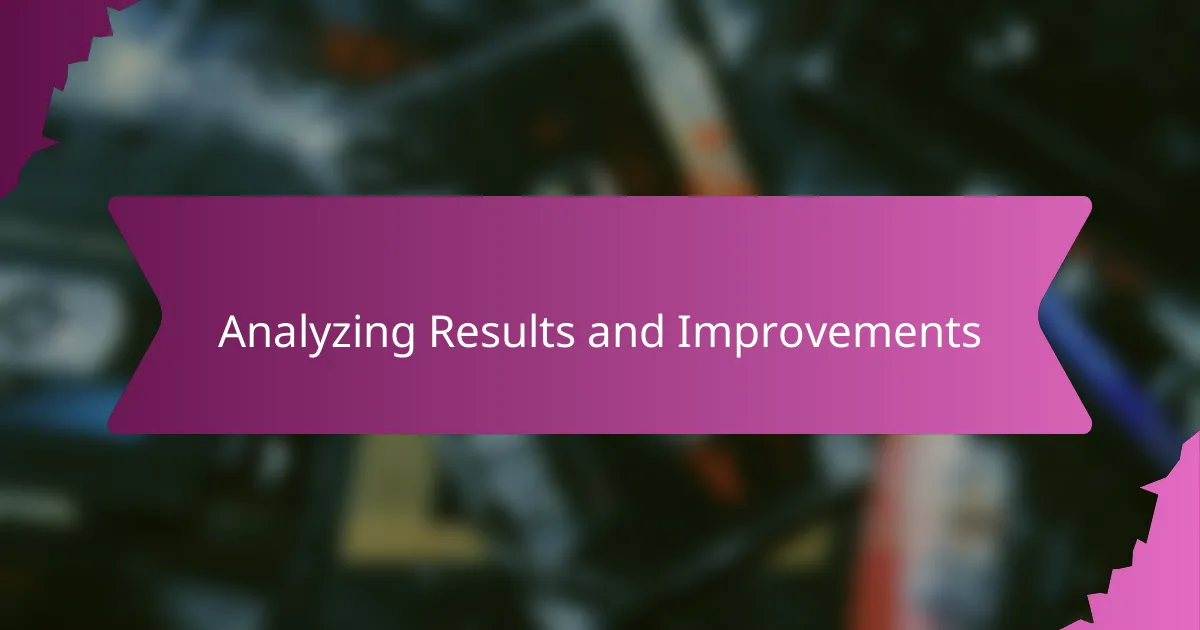
Analyzing Results and Improvements
Looking at the data after running my Google Ads campaigns felt a bit like listening back to a recording session—I had to pay close attention to the details to understand what was working and what wasn’t. Sometimes, I noticed certain keywords bringing in traffic but not converting to plays or follows, which made me rethink my approach. Have you ever put effort into something only to realize it’s not quite hitting the mark? That’s when I knew it was time to adjust.
One thing I found invaluable was setting small goals for each campaign and then reviewing the results regularly. Rather than overwhelming myself with all the metrics at once, I focused on clicks, engagement, and ultimately whether those clicks turned into genuine fan interactions. It was encouraging to see the improvements when I tweaked ad copy or shifted my target audience just a little—it reminded me that this process was very much an ongoing experiment.
I also learned that celebrating even minor gains kept me motivated. There were days when the numbers were modest, but each positive shift felt like progress in a larger journey. Have you ever felt stuck waiting for a breakthrough? For me, embracing these small wins made the whole Google Ads experience feel less like a gamble and more like a craft I could refine with patience and care.